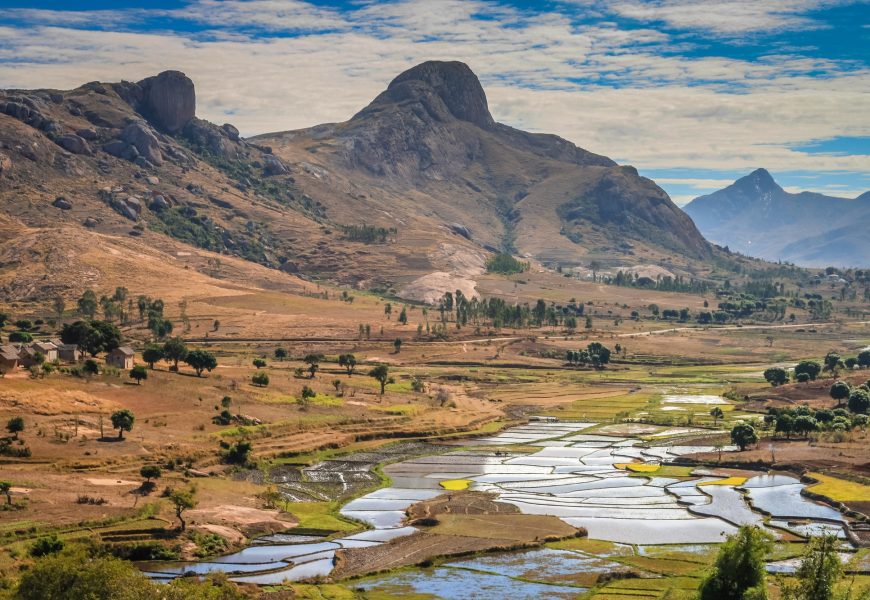Madagascar, the world’s fourth-largest island, is a treasure trove of unique biodiversity, stunning landscapes, and rich cultural heritage. Separated from the African mainland for millions of years, it has evolved a distinct ecosystem, making it a dream destination for nature enthusiasts and adventure seekers alike.
Key Attractions
Avenue of the Baobabs: Located near Morondava, this iconic dirt road is flanked by towering baobab trees, some over 800 years old. Visiting during sunrise or sunset offers breathtaking views and photo opportunities. (wildernesstravel.com)
Tsingy de Bemaraha National Park: A UNESCO World Heritage site, this park is renowned for its unique limestone formations known as “tsingy,” which create a labyrinthine landscape. Exploring its sharp peaks, deep gorges, and hanging bridges is an unforgettable experience. (wildernesstravel.com)
Andasibe-Mantadia National Park: Home to the largest lemur species, the indri, this park offers lush rainforests teeming with diverse flora and fauna. Guided walks provide opportunities to spot various lemur species, chameleons, and endemic birds. (wildernesstravel.com)
Safari Experiences
Madagascar’s safari experiences differ from the traditional African savannas. Instead of the Big Five, visitors encounter unique species found nowhere else:
Lemur Spotting: With over 100 species, lemurs are the island’s most famous inhabitants. Parks like Ranomafana and Anja Community Reserve offer guided treks to observe these primates in their natural habitats. (tripadvisor.com)
Bird Watching: Madagascar boasts numerous endemic bird species. The wetlands of Lake Alaotra and the forests of Masoala National Park are prime locations for bird enthusiasts. (tripadvisor.com)
Whale Watching: Between June and September, Île Sainte-Marie becomes a hotspot for observing humpback whales during their migration. Boat tours offer close encounters with these majestic creatures. (tripadvisor.com)
Local Cuisine
Malagasy cuisine is a flavorful blend of African, Asian, and European influences:
Romazava: Considered the national dish, it’s a hearty stew made with beef, pork, or chicken, and leafy greens, seasoned with ginger and garlic.
Ravitoto: This traditional dish consists of finely chopped cassava leaves cooked with pork, often accompanied by rice.
Mofo Gasy: A popular street food, these sweet rice flour pancakes are typically enjoyed for breakfast.
Fresh seafood is abundant, especially in coastal areas, with dishes featuring fish, prawns, and crab, often grilled or cooked in rich sauces.
Do’s and Don’ts
Do’s:
Respect Local Customs: Madagascar has various cultural taboos, known as “fady.” Always ask local guides about any customs to observe in different regions.
Dress Modestly: Especially in rural areas, it’s advisable to wear clothing that covers shoulders and knees.
Learn Basic Malagasy Phrases: While French is widely spoken, making an effort to speak Malagasy phrases can enhance interactions.
Don’ts:
Avoid Pointing with Fingers: It’s considered impolite; use your whole hand instead.
Don’t Photograph People Without Permission: Always ask before taking photos of locals to show respect.
Avoid Public Displays of Affection: Such behavior is frowned upon in many parts of the country.
Madagascar offers an unparalleled travel experience, combining unique wildlife encounters, diverse landscapes, and a rich cultural tapestry. Whether trekking through rainforests, relaxing on pristine beaches, or savoring local delicacies, the island promises memories that will last a lifetime.
Sources:


